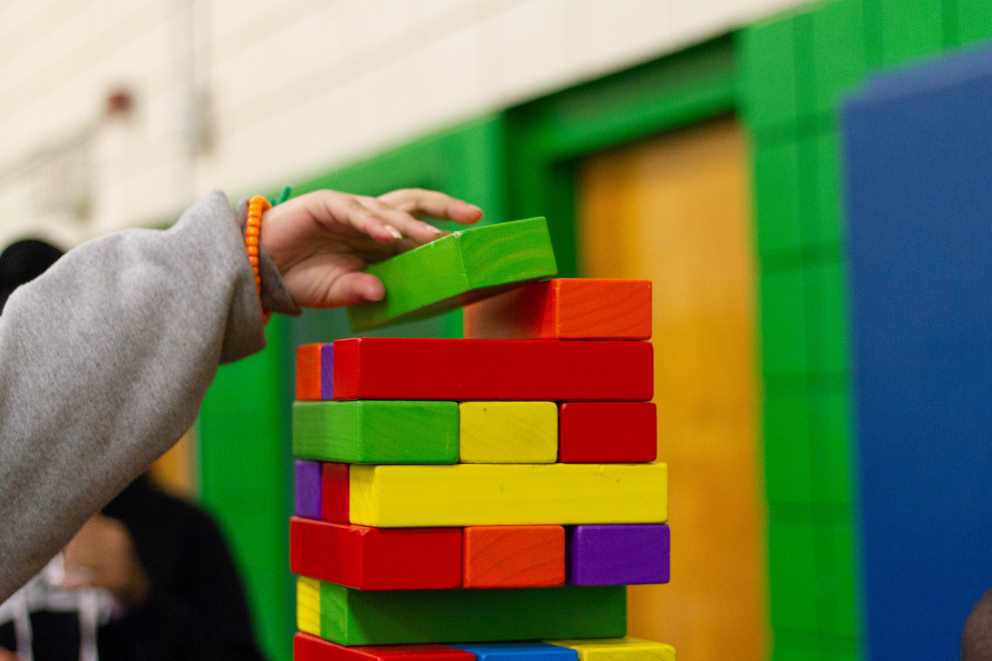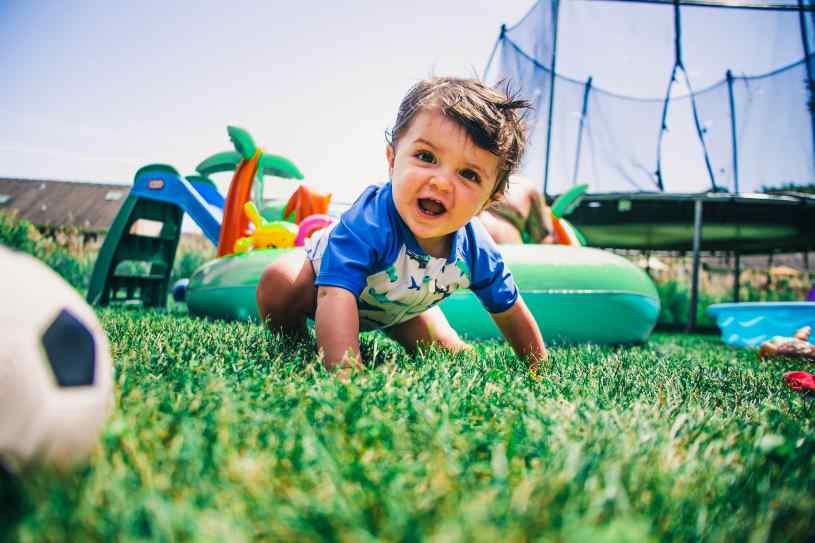Montessori education
Montessori Activities for Toddlers: Unlock Your Child’s Potential
Table of Contents
Introduction
The early years of a child’s life are the most crucial for development and learning. That is why more and more parents today are looking to Montessori education to nurture their toddler’s full potential. Montessori emphasizes self-directed learning, hands-on activities, and the development of the whole child.
In this comprehensive guide, we will explore how Montessori activities benefit toddler development, how to set up a Montessori-friendly environment at home, provide examples of activities that enhance different skills, recommend toys and materials, and offer solutions to common challenges parents face. Read on to unlock your toddler’s fullest potential through the Montessori method.
The Montessori Approach for Toddlers
The Montessori approach was developed over 100 years ago by Dr. Maria Montessori. It is built on core principles like:
- Child-centered learning – Activities are based on the child’s interests and developmental level.
- Freedom with responsibility – Toddlers are free to choose activities but are taught to use materials purposefully and respectfully.
- Mixed age classrooms – Age groups span 3 years allowing older kids to assist younger ones.
- Hands-on learning – Toddlers learn best through interactive sensory experiences rather than passive observation.
- Order and repetition – Activities are presented neatly and toddlers are allowed to repeat them for mastery.
Though developed for school-aged children, these principles are highly applicable for toddlers. The Montessori approach recognizes that toddlers learn best through movement and their senses. Therefore, activities focus on refining motor skills, language, sensory perception, and independence.
Benefits of Montessori Activities for Toddlers
Research shows that Montessori activities provide a wide range of developmental benefits:
Cognitive
- Improved concentration and longer attention span
- Better memory retention
- Advanced logical thinking and problem-solving skills
- Enhanced math and reading readiness
Social & Emotional
- Increased confidence and self-esteem
- Better impulse control and discipline
- Stronger sense of order and structure
- More grace, courtesy, and respect for others
- Higher levels of independence and responsibility
For example, a simple activity like transferring beans from one bowl to another with a spoon helps develop concentration, coordination, counting, and fine motor skills. This engages the toddler’s mind much more than watching TV or playing with typical mainstream toys.

Setting Up a Montessori-Friendly Environment
To implement Montessori activities at home, the learning environment should support your toddler’s exploration. Follow these tips:
- Child-sized furniture and shelving so everything is accessible.
- Low, open storage like baskets and trays for easy access to activities.
- Order and consistency in where materials are stored.
- Minimal clutter, distraction, and noise.
- Seating options – floor, small chair or standing.
- Materials neatly organized by type on low shelves.
- Natural lighting and ventilation.
- Plants, flowers or aquarium for nature observation.
- Room for movement and floor activities.
Montessori Activities for Fine Motor Skills
Refined hand-eye coordination and dexterity prepares toddlers for key tasks like writing and dressing. Try these activities:
Bead Threading
- Thread large wooden beads with holes onto a shoelace or pipe cleaner.
- Start with bigger beads, progressing to smaller sizes.
Buttoning
- Button and unbutton jackets or clip clothes pegs onto a fabric board.
- Use large buttons initially.
Pouring
- Pour water or beans between containers using a small pitcher.
- Use large mouth containers to avoid spilling.
Twisting
- Twist lids on and off jars or screw nuts onto bolts.
- Adjust complexity by lid or bolt size.
Cutting
- Snip playdough or strips of paper with child scissors.
- Work on control before expecting perfectly cut shapes.
Tweezing and Dropping
- Use tongs to transfer objects like cotton balls into containers.
- Drop pom poms or beads into a narrow neck bottle.
Montessori Activities for Language Development
Strong language skills are foundational for literacy and communication. Try these language-building activities:
Language Cards
- Point to picture cards and say vocabulary words out loud.
- Categorize cards into groups – animals, foods, jobs etc.

Language cards help build vocabulary
Storytelling
- Tell simple stories using pictures or word cards as prompts.
- Have toddlers re-tell stories to reinforce narrative skills.
Vocabulary Games
- “I Spy” to find specific objects based on clues.
- Matching games with picture cards for common words.
Language immersion through reading books, singing, and talking expands vocabulary. Ensure sufficient exposure to build expressive and receptive language.
Montessori Activities for Sensorial Development
Activities that stimulate sight, touch, sound, taste and smell help refine sensory perception:
Touch
- Texture bags – identify objects in a cloth bag by touch only.
- Tracing tactile letters and numbers cut out of sandpaper.
Taste & Smell
- Taste sensory bins – sample fruits, spices etc. and describe flavors.
- Smelling jars to match scents like lemon, lavender etc.
Sight
- Shape and color sorting games.
- Pattern cards and sequencing activities.
- Kaleidoscopes and prisms to observe light play.
Hearing
- Pair sound makers like bells, shakers, drums with movement.
- Listen to types of music, nature sounds and identify noises.
Keen senses motivate focused observation of the environment.
Montessori Activities for Practical Life Skills
Practical life activities cultivate real-world skills like:
Dressing
- Putting on clothes, shoes, zipping and snapping. Start with oversized items to make it easier.
Food Preparation
- Washing fruits, slicing bananas, spreading jam or butter.
Table Setting
- Fold napkins, place mats, arrange cutlery and cups.
Cleaning
- Dusting, window washing, sweeping with mini brooms.
Mastering these activities fosters purposeful movement, coordination, independence and responsibility.
Montessori Toys and Materials for Toddlers
Montessori toys allow toddlers to interact, explore and create. Recommended materials include:
- Wooden puzzles with knobs
- Lacing beads
- Stacking cups
- Shape sorters
- Pounding bench
- Wooden rainbow stacking tower
- Simple musical instruments
- Peg boards
- Nesting bowls
- Sorting trays
- Sandpaper letters/numbers
- Screwdriver boards
These open-ended toys stimulate the senses, develop skills and engage toddlers’ curiosity in purposeful ways without over-stimulation.

Age-Appropriate Montessori Activities
Toddlers develop rapidly between 12-36 months. Observe your child’s abilities and align activities accordingly:
12-18 months
- Grasping, shaking, banging objects
- Simple shape sorters
- Dump and fill activities
- Simple matching games
- Short picture books
18-24 months
- Unscrewing lids, twisting nuts and bolts
- Stack 4-5 blocks
- Scribbling with crayons
- 2-3 piece inset puzzles
- Identify pictures of familiar objects
24-36 months
- String large beads
- Complete 4-6 piece puzzles
- Hold crayon with thumb and fingers
- Match objects by color, shape and size
- Recognize names of common items
- Follow 2-3 step directions
Common Challenges and How to Overcome Them
Implementing Montessori activities has its challenges. Here are some common issues and solutions:
Problem: Toddler quickly loses interest in activities.
Solution: Rotate materials to pique curiosity and observe interests to tailor new activities.
Problem: Messiness and disorganization of space.
Solution: Set clear ground rules for taking out and putting away materials. Model tidying up.
Problem: Toddler mouths and throws materials.
Solution: Redirect this impulse into purposeful pouring, dumping or stacking activities.
Observe your child’s behavior patterns and experiment to figure out what works best. Every child is unique.
Balancing Montessori with Traditional Education
The Montessori method complements traditional early education programs. Ways to achieve balance:
- Incorporate Montessori materials and activities during playtime at home.
- Choose schools that integrate Montessori principles into their curriculum.
- Advocate for Montessori-inspired changes at your child’s school.
- Attend school info sessions to align supplemental home activities.
A combination nurtures academic, social and practical life skills.
Conclusion
The Montessori approach recognizes that toddlers learn best through movement, exploration and manipulation of concrete materials. Montessori activities ranging from practical life exercises to sensory stimulation provide an enriched learning experience and foster all areas of development.
Setting up a thoughtfully prepared home environment, providing age-appropriate activities and quality materials will allow your toddler’s natural curiosity to blossom. Commitment and creativity helps parents implement Montessori principles while balancing conventional education.
The rewards of enhanced independence, focus, motor skills and intellectual growth are well worth the effort. So embrace the Montessori method today to give your toddler the best start in life!
FAQs
What are the key principles of Montessori activities for toddlers?
The key principles are child-led learning, hands-on activities, sensory stimulation, developing practical life skills, order and repetition, respect for materials. Activities cater to the child’s interests and developmental stage.
How do Montessori activities benefit a toddler’s development?
Montessori activities help develop concentration, motor control, language, senses, math readiness, independence, responsibility and respect. Toddlers learn through movement and manipulation of concrete objects.
Can you recommend some Montessori activities for fine motor skills?
Activities like bead threading, pouring water between containers, twisting lids, buttoning clothes, cutting playdough help refine hand-eye coordination and dexterity. Start with large items and progress to more complex fine motor activities.
What is the ideal age to start Montessori activities with toddlers?
Many activities can be introduced as early as 12 months. But the peak age for Montessori learning is between 18-36 months when toddlers are developing rapidly and are naturally curious.
Are there any Montessori activities that promote language development?
Language cards, vocabulary matching games, storytelling with prompts, reading books, and language immersion through song and conversation can boost toddlers’ language abilities.
How can I create a Montessori-friendly environment at home for my toddler?
Use child-sized furniture, keep shelves low and open for easy access, organize materials neatly, minimize clutter and noise, include some natural elements and ensure lighting and space for movement and floor activities.
References
https://themontessorinotebook.com/montessori-activities
https://carrotsareorange.com/toddler-activities/
https://carrotsareorange.com/montessori-parenting/
https://cappuccinoandfashion.com/10-toddler-activities-montessori-activities-at-home/
https://www.livingmontessori.com/books-prospective-montessori-parents-read/
https://themontessorinotebook.com/favourite-montessori-parenting-books

